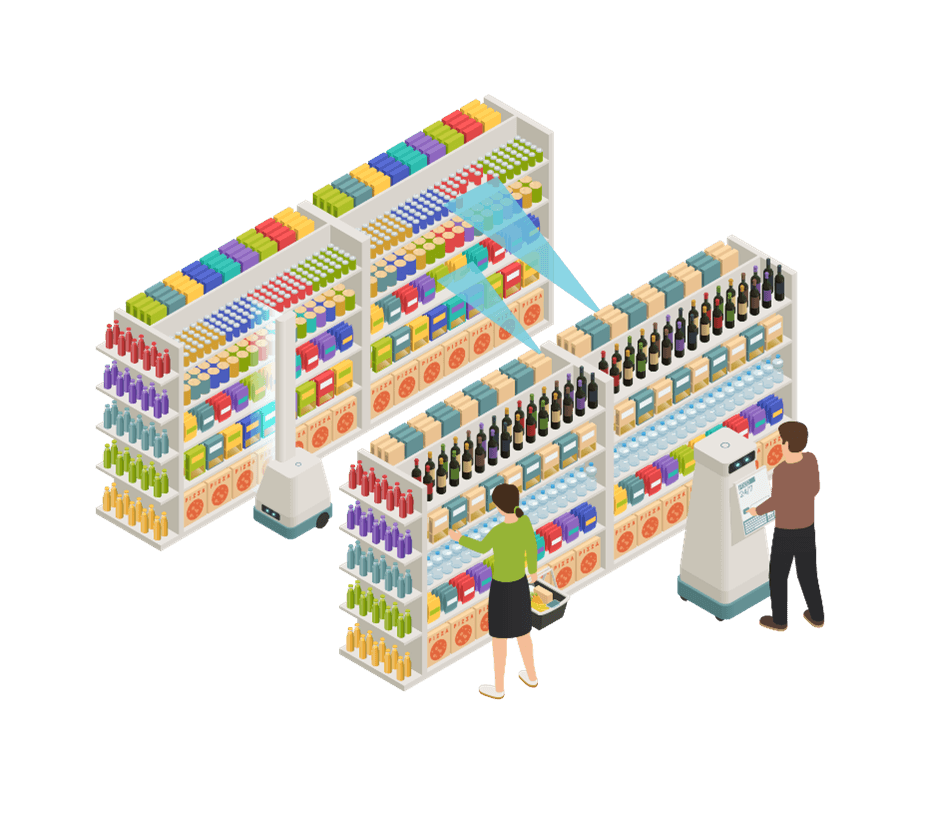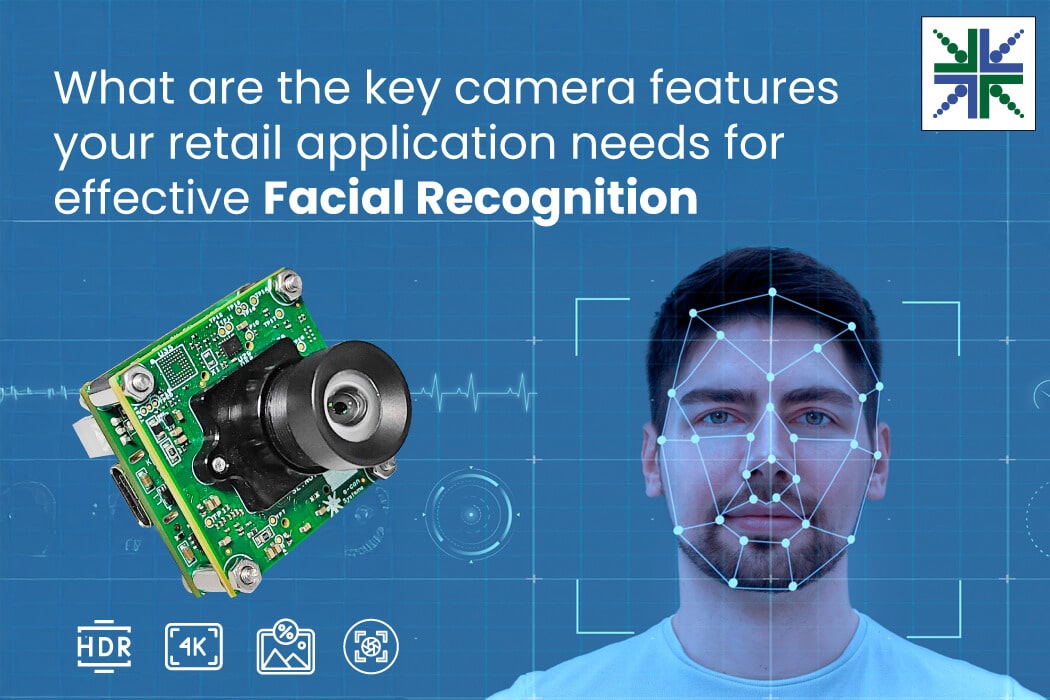Retail environments continue to embark on modernization journeys, thanks to the role of automation in user experience, security, and operational control. For instance, facial recognition is now a key part of how retail spaces are getting smarter. Facial recognition now plays a hands-on role in retail. It speeds up checkout lines, verifies users at kiosks, and quietly tracks what needs attention.
What does this mean for retailers? In a nutshell, both their customers and their products move the way they should! Yet, deploying the right camera is easier said than done. After all, the success of facial recognition outcomes in retail applications depends on how cameras capture, analyze, and transmit imaging data in real-world conditions.
In this blog, you’ll learn about the true impact of facial recognition in retail systems and the type of camera features it demands.
Retail Applications of Camera-Based Facial Recognition
Self-checkout systems
Retailers are increasingly relying on self-checkout counters to streamline transactions. Cameras are placed at retail counters and integrated with facial recognition software. It helps verify identities, monitor scanning behaviors, and reduce fraud. So, if a customer initiates a purchase without proper scanning, facial data can be used to analyze the event or issue a prompt.
The image shows a retail self-checkout counter equipped with a facial recognition camera. customers can complete transactions independently while cameras monitor product identification and verify proper checkout procedures using facial recognition.
Shelf monitoring systems
In shelf monitoring systems, cameras track how shoppers engage with products, helping determine interest levels, dwell time, and shelf engagement trends. Facial recognition becomes useful for linking behavioral data with known user profiles or identifying anonymous engagement clusters.

As a result of intelligent imaging, such information can guide product placement and stock rotation strategies.
Loss prevention systems
Shoplifting continues to be a thorn in the flesh of physical retailers. However, thanks to facial recognition, it has become easier to identify individuals associated with suspicious behavior. This is powered by camera solutions that offer real-time detection. For example, staff can be alerted when a repeat offender enters the store.
The elevated positioning of these camera systems ensures complete coverage of aisles and checkout areas, enabling staff to identify and respond to suspicious activities in real-time.
Retail kiosks
Standalone camera-based kiosks are strategically placed at entrances or inside stores to perform tasks like loyalty member identification, personalized greetings, access control, etc. They are integrated with facial recognition capabilities to provide a smooth interaction experience.
It is important to note that for these deployments, the camera must perform across various lighting environments and angles of interaction.
Key Camera Features for Facial Recognition in Retail Environments
High Dynamic Range (HDR)
Retail spaces frequently contain zones with stark lighting contrasts, such as a bright digital sign near a checkout scanner. HDR technology enables the camera to capture shadowed and bright regions in a single frame. It reduces problems like image washout or loss of details in darker zones and helps capture facial features, text, or product information under complex lighting.
HDR also minimizes noise and maintains color integrity, which supports downstream recognition processes.
High resolution and frame rate
Retail systems come under pressure while trying to distinguish unique facial structures or textures. With high-resolution cameras, they can capture pores, contours, and expressions that make up a person’s visual identity. Frame rate is also equally critical. A low frame rate may cause motion blur, whereas a high frame rate can help capture an image at the exact moment a subject turns toward the camera.
Focus type
The selection of focus type (autofocus or fixed-focus) depends on the retail use case. Autofocus is suitable when the user’s distance from the camera changes frequently. It adjusts dynamically to maintain sharpness across varying focal lengths. Fixed-focus units are preferred when the interaction zone is static, such as with mounted kiosks where users stand at a constant range.
Depth-Of-Field
In camera-based retail systems, Depth-of-Field (DoF) determines how much of the scene appears sharp. A shallow DoF isolates the face by blurring the background, aiding cleaner facial feature extraction. A deep DoF supports scenarios where multiple visual layers, such as a person and the surrounding shelf, must be in focus simultaneously. Selecting the right DoF impacts how accurately visual inputs are segmented for facial recognition algorithms.
Support for running AI models
Retail cameras with onboard AI support can perform object detection, movement tracking, and facial recognition locally. They handle workflows like identifying product removal, detecting lingering behavior, or distinguishing returning customers. The ability to run AI models on-device also strengthens response times. For example, when a shelf becomes empty, the system can immediately issue a prompt.
Low-power Wi-Fi connectivity
Modern retail deployments may need camera systems to operate in remote or large zones where wiring is either too complex or cost-prohibitive. Therefore, cameras with low-power Wi-Fi help maintain consistent data flow. They can provide continuous status updates, image streams, or AI-driven events. The cameras must also be energy-efficient, which makes them viable for always-on operation in high-traffic stores.
Compliance with privacy regulations
Facial recognition technology must meet legal and ethical standards, especially in public-facing contexts. Retailers operating in regions governed by frameworks such as GDPR must take steps to comply with consent, storage, and usage policies. Hence, cameras that enable facial identification must be equipped with privacy-aware features. It helps retailers meet legal compliance while preserving the trust of their customer base.
e-con Systems Offers High-Performance Cameras for Retail Environments
Since 2003, e-con Systems has been designing, developing, and manufacturing OEM cameras. Our retail cameras are compatible with computing platforms like NVIDIA, Qualcomm, NXP, Ambarella, and x86. They come with features like onboard ISP, low-light performance, minimal noise, LFM, two-way control, and long transmission distances. They also capture imaging data ideal for neural network training and support object detection and recognition.
Learn about our retail camera expertise.
You can also visit our Camera Selector Page to check out our complete portfolio.
Please write to camerasolutions@e-consystems.com if you want expert insights on finding the right camera for your retail application.

Ranjith is a camera solution architect with over 16 years of experience in embedded product development, electronics design, and product solutioning. In e-con Systems, he has been responsible for building 100+ vision solutions for customers spanning multiple areas within retail including self service kiosks, access control systems, smart checkouts and carts, retail monitoring systems, and much more.




